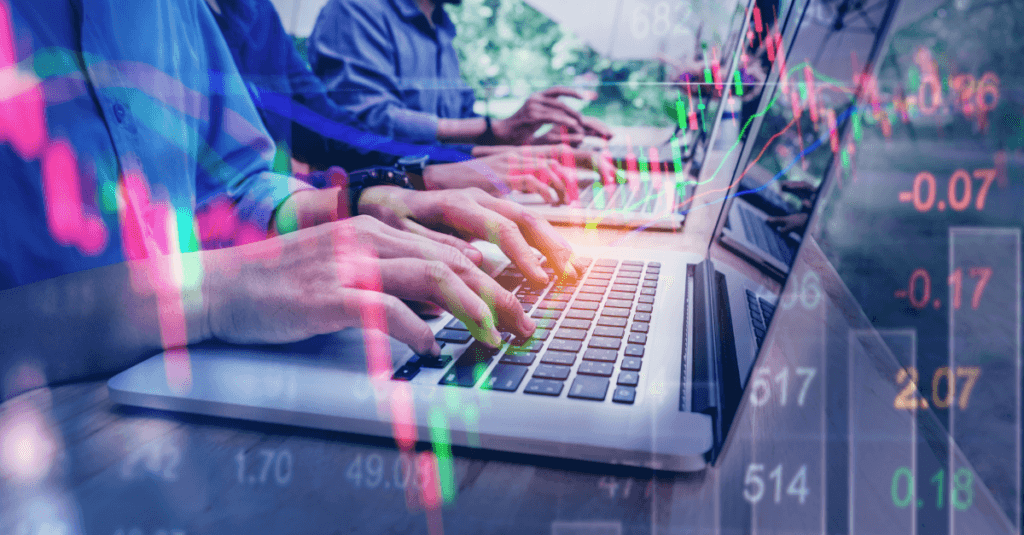If you’re on our site, you’ve probably already come across ‘forex trading’ and are curious to see what opportunities it might hold in store for you. Before you start, it’s important to learn a little about what forex trading is and how it works.
What is Forex Exactly?
The word Forex is an abbreviation for ‘Foreign Exchange’ and refers to the exchange of one currency for another on the over-the-counter market (OTC market) for an agreed price. The average turnover is over 5.3 trillion USD a day, making it the most traded market in the world. Forex has no central exchange point, no physical location in the world, but can be traded globally 24 hours a day offering its traders great opportunities.
Traders sell capital (go short) when they predict that the value of a currency will decrease. They buy (go long) when they predict the value will increase. Trading in Forex basically means buying one currency and selling another simultaneously make a profit.
What is Forex Trading?
Investors looking for big opportunities turn to Forex because of its advantage over other markets. The transaction costs are low, the liquidity is high, and there is a possibility to trade 24 hours a day, 5 days a week, offering you with better flexibility in your busy schedule.
The value of currencies change regularly due to factors like economics and politics. After the news, prices change very rapidly and you need to respond fast. A careful trader will spot trends in currency values from similar world events in the past and use these trends to decide whether to buy or sell at a given time. This is why it is important to educated yourself in the Forex market and be aware of what you need to do before you begin. Find out more about how educating yourself first helps you to be able to make yourself a successful income from home in Forex trading.
Many traders start with a Demo account; this is a simulation account offered by respectable brokers in order to practice your skills in advance, in an environment like the real thing, but with virtual currency. If a broker does not offer this possibility, then steer clear of them. The best brokers will help clients improve their trading decision making by offering free demo accounts, educational material, ebooks, webinars, and even bonuses when you join so that you start with more capital than what you deposit in the account.
What Are Spreads in Forex?
The buy price of a currency is known as the ‘bid’ and the sell price is called the ‘ask’. Each currency pair is represented by these two prices, often written in the form BID/ASK. The difference between these two values is called the ‘Spread’ – the difference between the cost of trading currencies, representing costs of broker services and transaction fees.
Fixed Spreads are kept constant and don’t depend on market conditions. Variable spreads on the other hand will fluctuate with market conditions and can change drastically. During times of low market inactivity, the spread is typically low, but during times of greater market activity the spreads can be at much higher values. Bigger spreads carry more risk than trading with fixed ones. This is because even though their is greater opportunity for more profit, there is also a risk of more loss. That’s why starting with fixed spreads is better for beginners just starting out in the business, until they have Forex trading explained to them accurately and are more confident with the transactions they make.
What Are Pips in Forex?
Spreads are usually denoted by the term ‘Pips’ which stands for Percentage in Points. Pips measure the exchange rate change in a currency pair and are written as a decimal number. some currencies are displayed with 4 decimal places, and a pip value for these are shown also with 4 decimal places. In this case 1 pip = 0.0001. Japanese Yen is displayed with just 2 decimal places so here 1 pip would be displayed as 0.01 for that reason.
Fractional pips offer more precision when exchange rates are quoted for a currency pair. Not all brokers will provide this though, but in this case, 1 fractional pip = 1/10 of a pip.
Final Thoughts
Now that you’ve mastered these concepts, it’s time to learn some other key terminology. Check out our forex trading glossary for more helpful terms.
